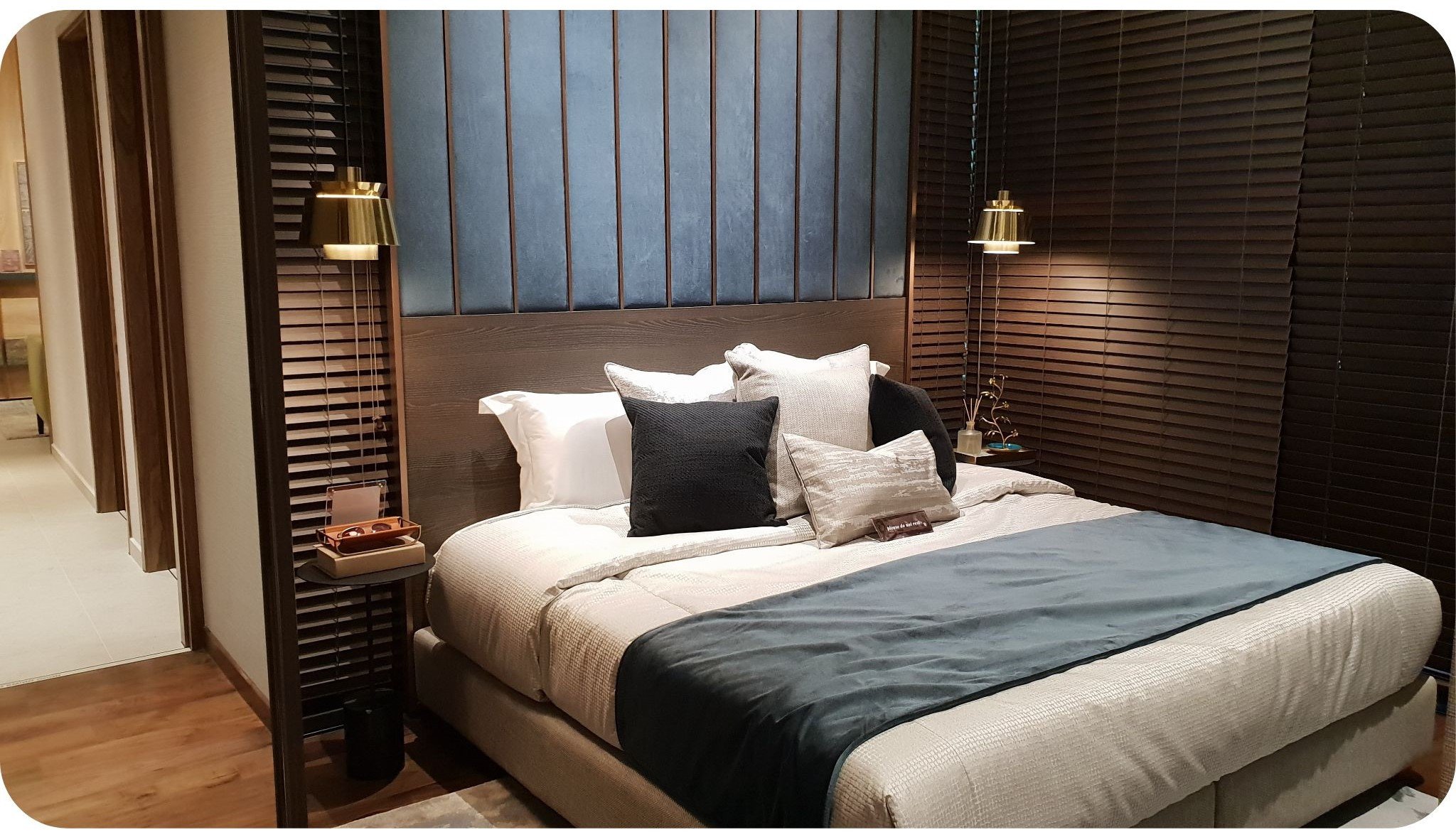Building Green? ICF is an option.
Insulated Concrete Forms can be one of the ways sustainable and energy-efficient buildings can be built.
Building a home is an opportunity to make choices that reflect a businesses’ values, especially regarding sustainability and energy efficiency. For many small developers, constructing a house from scratch can seem daunting, compared to refurbishing a property and especially if you've never done a ground-up building project. However, choosing suitable building materials, including using ICF methods can be crucial for creating a home that is cost-effective, environmentally friendly, and sustainable in the long run.
If you would like a no-obligation consultation for your site, please contact our associate GlobalVTech via the marketplace using this link >ADD MARKETPLACE 1st LINK

In this blog, SHEDyt explores various sustainable and energy-efficient building materials ideal for small and self-builders, especially those embarking on this journey for the first time. We'll look at everything from the ground up—literally. From foundations to roofing options and heating systems to window choices, this is a guide through each decision with a focus on materials that help lower heating bills, reduce environmental impact, and provide a comfortable, durable home. Whether your building firm is creating in the countryside or a suburban lot. Understanding these materials and methods will set your Property Development on the right path to creating your energy-efficient home in the UK.
1. FOUNDATIONS
Block and Beam Systems:
Block and beam systems are traditional methods used in UK home construction. This system consists of precast concrete beams spaced at intervals with infill blocks between them. It's particularly favoured for its ease of installation and the ability to span significant areas, making it suitable for various soil types. However, while block and beam setups provide structural robustness, they do not inherently offer the best insulation properties, which is a crucial factor for energy efficiency.
Insulated Concrete Slabs:
Moving towards a more sustainable option, insulated concrete slabs are becoming a preferred choice for environmentally conscious builders. These foundations are constructed by pouring concrete over a layer of high-performance insulation material, such as expanded polystyrene (EPS). The insulation is placed directly beneath the slab and around the edges, significantly reducing thermal bridging and heat loss.
The advantages of insulated concrete slabs are manifold:
Thermal Efficiency: They provide exceptional thermal mass, absorbing heat during the day and releasing it slowly when temperatures drop, which is ideal for the UK's variable climate.
Durability and Moisture Resistance: Concrete is inherently resistant to decay and pest damage, and when combined with insulation, it also helps control humidity levels within the home.
Cost-Effectiveness: Although the initial setup cost might be higher than traditional methods, the reduction in heating bills and the minimal maintenance required make it a cost-effective option in the long term.
Choosing insulated concrete slabs ensures a solid foundation for your home and contributes to its overall energy efficiency, making it an excellent investment for future savings and comfort.
2. WALLS
Insulated Concrete Forms (ICF)
Insulated Concrete Forms (ICF) are revolutionising how homes are built, especially for those aiming to enhance energy efficiency and sustainability. ICFs consist of hollow blocks or panels made from expanded polystyrene insulation or similar materials, which are stacked to form the walls of a building and then filled with reinforced concrete. This construction technique offers several benefits particularly advantageous in the UK's climate.
Superior Insulation: ICF walls provide substantial insulation by combining foam's thermal resistance with concrete's mass. This results in outstanding thermal performance, significantly reducing yearly heating and cooling costs.
Airtightness: Combining concrete and foam creates an exceptionally airtight envelope, minimising drafts and cold spots, which are common in traditional construction methods. This airtightness contributes to a more stable and comfortable indoor environment.
Sound Insulation: ICF walls are also excellent for reducing external noise, making them ideal for homes in noisy areas or those who value a quiet indoor atmosphere.
Speed of Construction: ICF construction can be faster than traditional methods since the formwork does not need to be removed, and the system's simplicity reduces labour hours.
Durability: Concrete's robustness provides increased protection against severe weather, which is an essential factor for homes in many parts of the UK prone to extreme weather conditions.
Incorporating ICF into your build improves the home's energy performance. It contributes to a more sustainable construction practice by reducing the amount of waste and energy used in the building process.
3. ROOFING OPTIONS
Choosing a suitable roofing material is crucial for your home's energy efficiency and sustainability. Here's a look at some popular options ideal for the UK's climate:
Clay Tiles
Clay tiles are a timeless choice that offers durability and a classic aesthetic. They naturally resist the elements, making them suitable for the variable UK weather. Clay tiles also provide excellent thermal performance, helping to regulate indoor temperatures effectively.
Slate
Slate roofing is another durable and effective option. It is known for its natural ability to withstand decades of exposure to harsh weather. Like clay tiles, slate has excellent insulation properties and contributes to a home's overall energy efficiency.
Green Roofs
Green roofs are covered with vegetation, which provides substantial insulation and helps manage rainwater runoff. They are particularly beneficial in urban areas where they can improve air quality and reduce the heat island effect. In addition to their environmental benefits, green roofs can enhance the thermal insulation of your home, making them an attractive option for energy-conscious builders.
Benefits: Besides their insulative properties, green roofs extend the lifespan of roofing materials by protecting them from UV rays and physical damage. They also offer habitats for wildlife and spaces for agriculture or leisure.
Each roofing material offers unique benefits and can be chosen based on aesthetic preferences, budget, and specific environmental goals.
4. WINDOWS
Selecting the right windows is pivotal in creating an energy-efficient home. Windows are crucial in insulation, natural lighting, and overall energy consumption. Here's what self-builders in the UK need to consider:
Energy Ratings and Glazing Options
Windows are rated by energy efficiency, ranging from A++ (most efficient) to G (least efficient). Aim for windows with a rating of at least A or higher for an energy-efficient home.
Double vs. Triple Glazing: Double glazing involves two panes of glass with a space between them, typically filled with air or an inert gas like argon, which reduces heat loss. Triple glazing adds pane for even better thermal performance, which can be particularly advantageous in cooler UK climates.
Frame Materials: The material of the window frame also affects the window's thermal efficiency. Sustainable options include:
Wood: Naturally insulating and renewable, wood frames offer good environmental credentials but require maintenance to prevent weathering.
Recycled Aluminum: Durable and low maintenance, recycled aluminium frames are a more sustainable alternative to new aluminium, as they use less energy in production.
Orientation and Size
The orientation of your windows can harness natural light and heat, which is a critical part of passive solar design:
South-facing windows capture the most sunlight during the day, helping to heat the home naturally during the winter.
Smaller or fewer windows on the north side can help reduce heat loss.
Proper window sizing and placement can significantly influence your home's lighting needs and temperature control, reducing reliance on artificial heating and lighting.
5. HEATING SYSTEMS
An efficient heating system is essential for any energy-efficient home, especially in the UK, where the weather can be unpredictable. Here are some sustainable heating options:
Ground Source Heat Pumps
Ground source heat pumps (GSHPs) use pipes buried in the garden to extract heat from the ground. This heat can then be used to warm radiators, underfloor heating systems, and water.
Energy Efficiency: GSHPs are highly efficient, delivering constant heat at lower temperatures over more extended periods.
Cost-Effectiveness: While the initial installation cost can be high, the long-term savings on energy bills can be substantial.
Solar Thermal Systems
Solar thermal systems collect heat from the sun and use it to warm domestic hot water. These systems can be integrated with existing hot water systems and can significantly reduce heating bills.
Sustainability: Using renewable energy from the sun, these systems reduce reliance on fossil fuels and decrease carbon emissions.
Biomass Boilers
Biomass boilers burn organic materials like wood pellets, chips, or logs to provide heating and hot water. This is a sustainable option as the carbon dioxide emitted when the fuel is burned is approximately equal to that the plants absorb as they grow.
Cost-Effective and Sustainable: Biomass is generally cheaper than fossil fuels and is considered carbon neutral.
Integrating these systems into your home ensures efficient heating and supports sustainability by reducing the overall carbon footprint.
6. FLOORING
Choosing the right flooring is not just about aesthetics; it also contributes to your home's thermal comfort and sustainability. Here are some environmentally friendly and energy-efficient flooring options to consider:
Bamboo Flooring
Due to its rapid growth rate, bamboo is a highly sustainable choice, making it a popular alternative to traditional hardwood floors.
Durability: Bamboo is tough and durable, comparable to many hardwoods, making it suitable for high-traffic areas.
Energy Efficiency: Bamboo's natural properties include good insulation, helping to keep the home warmer in winter and cooler in summer.
Cork Flooring
Cork is another sustainable flooring option derived from the bark of cork oak trees, which regenerate their bark after harvesting.
Thermal Insulation: Cork naturally insulates and can help reduce energy costs by keeping your home warmer.
Acoustic Insulation: Besides its thermal properties, cork also provides excellent noise dampening, perfect for reducing echo in larger spaces.
Reclaimed Wood
Using reclaimed wood for flooring is environmentally friendly and adds unique character and charm to your home.
Sustainability: Reclaimed wood repurposes existing materials, reducing the need for new raw materials and the environmental impact associated with their extraction and processing.
Insulation: Wood generally has good insulative properties, and using it in flooring can help maintain your home's internal temperature.
7. UNDERFLOOR HEATING
Underfloor heating can efficiently heat your home, especially when combined with some of the flooring options mentioned above.
Even Heat Distribution: Unlike traditional radiators, underfloor heating provides even heat distribution across the room, enhancing comfort.
Energy Efficiency: It operates at a lower temperature while still producing the same level of warmth as conventional heaters, leading to reduced energy usage and lower heating bills.
Building ground up is a journey of discovery and decision-making. By choosing sustainable and energy-efficient materials, you’ll increase resale value but also in the long-term comfort and economy for the occupier. From the foundation to the roof and everything in between, the choices you make have a profound impact on your home's energy consumption and environmental footprint.
Remember, the key to a successful build is thorough planning and consultation with professionals who can provide guidance tailored to your specific circumstances and location. As you embark on this exciting project, ICF can contribute positively to the resident’s quality of life and the environment too.
We hope this guide has illuminated the path towards creating a home that is as eco-friendly as beautiful. For more information on how ICF construction can be used to build your sustainable, energy-efficient home, contact the SHEDyt team or if you're ready for a survey, then purchase directly through the marketplace > ADD MARKETPLACE 2nd LINK
(MC064c)
Make Your Business Online By The Best No—Code & No—Plugin Solution In The Market.
30 Day Money-Back Guarantee
Say goodbye to your low online sales rate!








